Samar Safi-Harb is a professor and Canada research chair in extreme astrophysics, physics and astronomy in the U of M’s faculty of science.
“I am a high-energy astrophysicist,” she said, “which means I study the fate of stars after they die, and I study the formation of some of the most exotic objects in the universe, like neutron stars and black holes.”
Safi-Harb first developed an interest in physics during high school, initially considering a career in medicine. Upon starting university, she chose to pursue physics, realizing by the end of her undergraduate studies that the subject was her true passion.
“I was really fascinated by physics and especially understanding the formation of the constituents of matter,” she said. “I was interested in particle physics in particular, and so I decided to go into the University of Wisconsin-Madison in [the U.S.] to pursue this field.”
Safi-Harb began her journey by studying elementary particles, such as neutrinos, motivated by her curiosity about their mysteries. While pursuing her graduate studies on a fellowship held in the U.S., she explored various research areas and unexpectedly discovered a passion for astrophysics. She found a fulfilling path in high-energy astrophysics, where she applied physics to investigate cosmic phenomena that help unravel the mysteries of the universe.
Today, she specializes in high-energy and multi-messenger astrophysics, with a focus on the X-ray Universe and the synergy with gravitational wave astrophysics. These Universe messengers are essential for studying phenomena such as the deaths of stars and the birth of new exotic stars. Her career began in X-ray astronomy, which has played a key role in major discoveries including the detection of black holes and new classes of neutron stars.
“I started [research] in X-ray astronomy and my area of focus is the death of stars and the formation of some of the most exotic magnetic stars in the universe,” she explained. “These objects that I study are called neutron stars. When [massive] stars 10 times the mass of the sun run out of their nuclear fuel, the sun is eventually going to die in billions of years.”
Safi-Harb explained that massive stars have a lifespan of millions of years, and they ultimately die when they exhaust their nuclear fuel. This death results in a powerful explosion known as a supernova, which creates a very compact star comparable in size to the city of Winnipeg.
She studied rotating neutron stars that emit beams of radiation, similar to the way a lighthouse operates. These beams are detected as pulses when they sweep past earth, leading to the discovery of pulsars. Her research focuses on understanding the extreme physics resulting from stellar explosions and the formation of these exotic objects.
Safi-Harb expanded her research from X-rays to other areas of the electromagnetic spectrum, collaborating with global partners to study high-energy astrophysical phenomena such as neutron stars, black holes and supernovae.
She recently joined the Laser Interferometer Gravitational-Wave Observatory (LIGO) Scientific Collaboration, which investigates gravitational waves, the ripples in space-time predicted by Albert Einstein in 1916. Her current work focuses on multi-wavelength and multi-messenger astrophysics, combining observations of light and gravitational waves to achieve a deeper understanding of the extreme universe.
“I’m heavily involved in the development of missions for the future, particularly in X-ray astronomy,” she said. “One of the missions that I’ve used in my career for the past 25 years is called the Chandra X-Ray Observatory.”
“The Chandra X-ray Observatory has been the most powerful mission launched by NASA 25 years ago to study the universe, the X-ray universe, with very high precision. It has a very high angular resolution. It is like the Hubble space telescope, but in X-rays or X-ray universe.”
Safi-Harb is contributing to the development of a next-generation X-ray telescope called AXIS (Advanced X-ray Imaging Satellite), often described as a “super Chandra.” This advanced mission will provide much sharper resolution and greater sensitivity, enabling us to look deeper into space and respond faster to sudden cosmic events, such as those detected through gravitational waves, according to Safi-Harb.
Safi-Harb is leading a team on the advancing collaborative connections for earth system science (AXIS) mission, an advanced X-ray imaging satellite chosen by NASA for the next phase of development. AXIS is one of two missions currently competing for final approval, having received $5 million to support its case, according to Safi-Harb. Her team is focused on studying neutron stars, compact objects and supernova remnants. If selected, the mission is expected to launch in 2032.
“I think it’s important for students, young people to follow their passion […] be informed and seek mentors who can help you achieve your goals or connect you with people in the field you’re passionate about,” Safi-Harb said.


